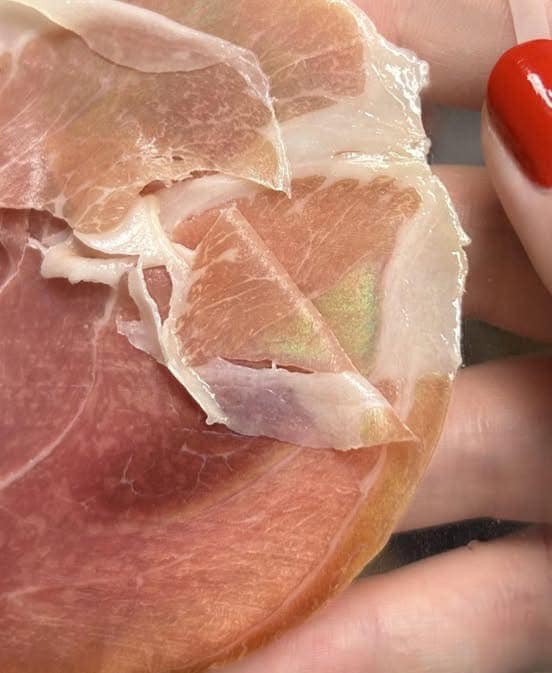ADVERTISEMENT
**If Your Ham Has a Rainbow Sheen, Here’s What It Means**
Ham is a popular dish enjoyed across various cultures and is often a centerpiece for family gatherings, holiday feasts, and celebrations. Whether it’s a glazed ham for Easter, a juicy baked ham for Thanksgiving, or a simple ham sandwich, this versatile meat never fails to satisfy. But what if you notice something unusual about your ham—like a **rainbow sheen** on the surface? Is it safe to eat? Should you be worried?
In this article, we’ll explore what the rainbow sheen on ham really means, why it happens, and whether it poses any risk to your health.
### Understanding the Rainbow Sheen on Ham
A **rainbow sheen** on ham or any other type of cured or cooked meat can be a bit startling, especially if you’ve never seen it before. However, rest assured that this phenomenon is usually harmless and has a natural explanation. The rainbow-like appearance is caused by the way light interacts with the surface of the ham, often due to the presence of certain compounds and moisture content.
#### What Causes the Rainbow Sheen?
The rainbow sheen typically occurs when light hits the surface of the ham at certain angles and is refracted, much like how light can create a rainbow on the surface of a bubble or oily puddle. The specific reasons behind this rainbow effect in ham include:
1. **Moisture and Natural Proteins**: Ham, like other meats, contains a lot of natural proteins, fats, and moisture. The presence of moisture on the surface of the ham, combined with proteins like **myoglobin** and **fatty acids**, can create a film on the surface of the meat. When light hits this film, it refracts and reflects, creating the rainbow-like effect.
2. **Curing Process**: During the curing process, especially with **smoked or wet-cured hams**, salts and other preservatives interact with the meat’s proteins. This can lead to a slight change in the meat’s appearance, particularly when combined with moisture or condensation. The result is often a subtle sheen that may catch the light in a way that creates iridescence.
3. **Surface Glaze or Coating**: Some hams, particularly those that are **glazed** or have a sugary coating (like honey or brown sugar), can develop a thin layer on their surface. This can also contribute to the rainbow effect, especially when the glaze has a glossy finish that interacts with light. This phenomenon is commonly seen with **Christmas hams** or holiday hams that are coated in a sugary glaze and then caramelized during cooking.
4. **Cooking Method**: If you’ve recently cooked the ham, the heat could have caused the moisture on the surface to create a subtle film. This film reflects light and produces the rainbow sheen. If you’ve been glazing the ham during cooking, the sugars from the glaze can further enhance this effect.
### Is the Rainbow Sheen Safe?
The good news is that **rainbow sheen** on ham is typically **not a sign of spoilage or contamination**. It is a natural and harmless occurrence due to the way light interacts with the meat’s surface.
However, there are a few things to keep in mind:
– **Check the Smell**: While the rainbow sheen is generally harmless, always trust your senses. If the ham has a foul or sour odor, this could indicate that it has gone bad. Fresh ham should have a clean, pleasant smell, and any signs of rancidity or unusual odors should be a red flag.
– **Visual Inspection**: Along with the rainbow sheen, if you notice other unusual colors, such as **green or grayish** tints, or if the texture of the ham is off (slimy, overly dry, or sticky), it may be a sign that the meat is not fresh and should be discarded.
– **Check the Expiration Date**: Make sure that the ham hasn’t passed its expiration date or use-by date. If it’s within the recommended timeframe and properly stored, it should be safe to eat.
Why Does This Happen More Often with Certain Types of Ham?
For Complete Cooking STEPS Please Head On Over To Next Page Or Open button (>) and don’t forget to SHARE with your Facebook friends
ADVERTISEMENT
